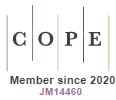Playful culture: the influence of playing through riverside objects on learning of child
DOI:
https://doi.org/10.5585/51.2024.25297Keywords:
playful culture, riverside child, riverside objects, learningAbstract
Rivers and forests are scenarios that invite the imagination of riverside children to play fishing, climb trees, and create their playful experiences. In this context, this article results from a study on the categories of analysis in recreational culture, riverside objects and learning, based on the theoretical foundations of Kishimoto (2007), Brougère (1998), Vygotsky (1998) and others. The investigation discusses learning in riverside children's recreational culture as a research object, thus, the following question was formulated: how does playing through riverside objects influence children's learning? The research was based on a qualitative approach in case study methodology. The collected data were interpreted in content analysis. The results show that the riverside object present in the child's reality and playful memory contributes to learning, in the sense of being involved in the culture that they build and share in the context of the community.
Downloads
References
BARDIN, L. Análise de conteúdo. São Paulo: ED. PERSONA, 1977. https://doi.org/10.14244/%2519827199291.
BROUGÈRE, G. “A criança e a cultura lúdica”. Revista da Faculdade de Educação. Revistas da Usp, São Paulo, n. 2, p. 103-116, https://doi.org/10.1590/rfe.v24i2.59630, 1998.
CARVALHO, C. N. “Saberes do cotidiano das crianças ribeirinhas”. Pará: Revista Cocar. 2010. p. 34-38. Disponível em: https://periodicos.uepa.br/index.php/cocar/article/view/50. Acesso em: 19 nov. 2024.
FARIA, Ana. “Pedagogia do Lugar: pequena coleção para colaborar na construção e ocupação dos territórios da infância”. In: FARIA, A. L. G; DERMATINI, Z; PRADO, P. (Org.). Por uma cultura da Infância: Metodologia de Pesquisa com Crianças. Campinas: Autores Associados, 2009. p. 39-64. ISBN 978-85-86305-71-9.
GAMBOA, S. A. S. Pesquisa qualitativa: superando tecnicismos e falsos dualismos. Itajaí, 2003. Contrapontos. Disponível em: https://periodicos.univali.br/index.php/rc/article/view/735. Acesso em: 19 nov. 2024.
GIL, A. Métodos e técnicas de pesquisa social. São Paulo: ED. ATLAS, 2008. ISBN-13 978-6559771639.
KISHIMOTO, Tizuko. “O jogo e a educação infantil”. In: FARIA, M. T. (Org.). O jogo, brinquedo, brincadeira e a educação. São Paulo: Editora Cortez, 2007. p. 13-40. Disponível em: https://periodicos.sbu.unicamp.br/ojs/index.php/proposic/article/view/8644269. Acesso em: 19 nov. 2024.
MOYLES, J. Só brincar? o papel do brincar na Educação Infantil. Porto Alegre: ED. PENSO, 2002. p. 1-200. ISBN: 9788573076639.
PRODANOV, C. C; FREITAS, C. E. Metodologia do trabalho científico: métodos e técnicas da pesquisa e do trabalho acadêmico. Nova Hamburgo: FEEVALLE, 2013. p. 11-276. ISBN 978-85-7717-158-3.
REIS, C. D; MONTEIRO, F. E; PONTES, R. A. F; SILVA, C. S. S. “Brincadeiras em uma comunidade ribeirinha amazônica”. São Paulo, 2012. Psicologia: teoria e prática. Disponível em: https://editorarevistas.mackenzie.br/index.php/ptp/about/contact. Acesso em: 19 nov. 2024.
STAKE, R. E. “The art of case study research”. Trad. Ivar César Oliveira de Vasconcelos. Rio de Janeiro, 1995. Meta: avaliação. https://doi.org/10.22347/2175-2753v8i22.1038.
VYGOTSKY, L. S. A formação social da mente. São Paulo: Martins Fontes, 1998. Disponível em: https://archive.org/details/vygotsky-a-formac3a7c3a3o-social-da-mente/page/n9/mode/2up. Acesso em: 19 nov. 2024.
Downloads
Published
How to Cite
Issue
Section
License
Copyright (c) 2024 Solange dos Santos Conceição, Ângela do Céu Ubaiara Brito

This work is licensed under a Creative Commons Attribution-NonCommercial-ShareAlike 4.0 International License.
- Abstract 49
- PDF (Português (Brasil)) 40






